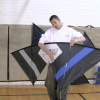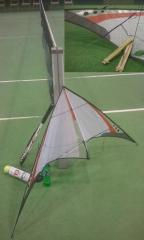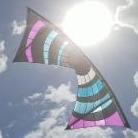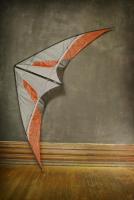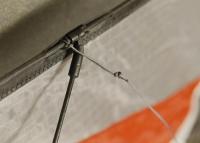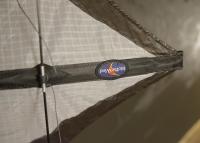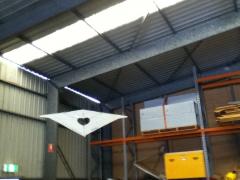Search the Community
Showing results for tags 'indoor'.
-
What are you focusing on now? Which exercises or figures are you returning to? What is learned from them? A post of yours regarding a certain exercise might include (baked in) answers to a few of these questions: What are you working on now/recently? What did you learn and how did you do it? What do you think your hands/body were doing (if you were successful)? Why is it a good exercise for you? What was the feeling? Come on don’t be shy – even the silliest comparison/analogy/image might talk to someone. What were the necessary steps/skills/realizations before this exercise? What kite and line length do you prefer to use for the drill? What are the most favourable conditions to start out doing the exercise? Are there any other exercises or context in any form of kiting where your recently gained wisdoms are applicable to, like medium wind kiting with longer lines or perhaps kiting with another number of lines? If you didn’t post the exercise, but instead tried to follow the advice given, how did it go, are there any remaining question marks? Can something be described in another way? Perhaps you want to repeat an exercise suggestion, but in your way? It is fine to return to this topic if you realize something more about a drill/exercise half a year later or so, whether you originally posted the suggested exercise or not. 1, 2 or 4 lines are all fine, but consider to clarify if not obvious. Typically used line length? Without knowing it, you might be holding a piece of somebody's puzzle or provide an exercise that unlocks another ability for someone. Expressing something for someone else clarifies it for yourself as well. Sing it out!!
- 11 replies
-
- indoor
- short line
-
(and 3 more)
Tagged with:
-
157 downloads
This tutorial from Kitelife.com provides a basic introduction to indoor kite flying, using Indoor Revs. Just a brief overview, our introduction video is the first in a series of detailed tutorials covering everything from basics of set up and flight to advanced tricks and techniques on the Indoor Rev and indoor fitted B2. You can look forward to a growing collection of similar tutorials covering equipment, flight techniques and other "pro secrets" gathered from over 20 years in the kiting community... A number of them will be available here on YouTube, while the majority of these tutorials will be located in the Kitelife Subscribers section, be sure to subscribe today if you like what we're doing here! -
103 downloads
This tutorial from Kitelife.com breaks down reliable methods for assembling and disassembling your Indoor Rev, making it painless and neat. You can look forward to a growing collection of similar tutorials covering equipment, flight techniques and other "pro secrets" gathered from over 20 years in the kiting community... A number of them will be available here on YouTube, while the majority of these tutorials will be located in the Kitelife Subscribers section, be sure to subscribe today if you like what we're doing here! -
106 downloads
This tutorial from Kitelife.com provides instruction on the very most basic style of catch and throw on an Indoor Rev, allowing you to pull the kite off the end of the lines into your hands, and toss it back out to the end of lines for flight. You can look forward to a growing collection of similar tutorials covering equipment, flight techniques and other "pro secrets" gathered from over 20 years in the kiting community... A number of them will be available here on YouTube, while the majority of these tutorials will be located in the Kitelife Subscribers section, be sure to subscribe today if you like what we're doing here! -
Coming soon. https://www.facebook.com/kiteforge/videos/328735464269653/
-
So I ran a forum search and couldn't figure this out...so here I am asking for help, lots of questions but one main idea - what is an SUL really?: What is the difference between an indoor quad and an SUL? What makes an SUL different than a standard? Can I take a standard and change/tweek some stuff and end up with a SUL sail - or is the sail itself too heavy or is the sail geometry different? Is an SUL just an indoor flown outside when there is no wind?? I know that there are times when there is not enough wind to keep my standard afloat without lots of work....and that is ok. But I keep hearing about SUL but I don't know what that really means. Not looking for an equipment fix to the no wind issue, just trying to educate myself as to what the consensus is on terms.
-
Add on indoor clinic prior to the UK Quad Clinic, 4:30p to 9:30p, registration is $30 for 5 HOURS of indoor access and instruction with John Barresi and Josh Mitcheson covering all types of kites including single, dual and quad line. Indoor instruction examples - http://kiteforge.com/help Sign up link - http://kitelife.com/forum/store/product/78-uk-indoor-clinic-aug-29-2018/ RSVP'd: @Flintfootfilly (Sarah) @FlyingHigh (Gavin) @Simon Cooper @sra7913 (Soren) @Gekko (Per) @drdante (Dan) Louse MJ @Stephen Sunderland @JWharton Diana M @Neil Lover @bluesign2k Caroline S @Caller Stephen Alice M
-
We're pleased to yet again announce the next prize being given away to our most appreciated supporters, the Kitelife Subscribers... For roughly 10 cents per day they play a major role in keeping KL growing in every way. The winner of this drawing will receive one brand new Kaiju by Kite Forge, complete with 7' lines ($135 value)... Actual prize kite is white and blue, as shown in the photo and video above. == Info on the Kite Forge website: http://kiteforge.com/product/kaiju/ http://kiteforge.com/help-tutorials/ == If you haven't done so already, You can sign up here. Odds of winning for this prize is currently 1/363, and will be drawn on June 10th, 2018! Our thanks, and the very best to you... Let the drooling begin.
- 24 replies
-
- 3
-

-

-
- short line
- indoor
-
(and 1 more)
Tagged with:
-
I bought a Rev indoor, on a whim. Its Red White and Blue. In nearly new condition and it will come with a brand new set of lines, but no handles, as it didn't come to me with any. As Quads are my thing, I am looking for another rev, or other quad line kite WHY?? Possible PX with cash either way for the right kite. I am located in Cornwall UK but willing to post. Email me :- pete.sobye@icloud.com
-
- revolution
- indoor
-
(and 1 more)
Tagged with:
-
Wed Jan 10 11:03:35 CET 2018 A tennis court in a sports hotel in Schladming in the Austrian Alps Prism 4D on about 3m (10 ft set, but with adjustable length) 20kg lines (The 4D was the only kite that fitted into the suitcase - brought it just in case...) This reminds me of a Swedish proverb: "Som en åsna mellan två hötappar" - like a donkey between two hay feeding stations. This means here that there is a problem of choosing a preferred activity. The surface of this tennis court was a bit odd. The first time I played tennis during the trip I didn't realize that that the smooth surface was made up of green rubber gravel. Those handles were not as quick to adjust as I had hoped for unfortunately. Perhaps one should add a little knob on the handles to wind the line around to make the process evening the length simpler? The opportunity Line tension, line tension and line tension or should I rather say that technique, technique and reliability training was the theme of the week. On vacation in the alps the key occupation has been skiing of course, but the circumstances provided opportunities to do tennis and kiting as well. The reason for the opportunity for the tennis and kiting? Waiting for a teenager daughter not really appreciating any morning I had a chance to use the always free tennis courts of the hotel. Active learning Before starting with the kiting session I'd like to point out one similarity between all three sport activities and that is the constant aim of improvement in technique and reliability. Furthermore I'd say that kiting (which is the activity I spend most time doing) has introduced/evolved an ability (I hope) to find the most important thing learnt from a session and then to take a short note of that. If you have this goal of not wasting lessons learned, it comes natural to think through the previous session(s) and have an idea of what to think of and what to practice the next time. I believe one reason for starting out with the notes and written preparations is that on the field there are no other persons to learn from. Well, when learning from videos, as others have already pointed out, it can be difficult to remember it once you are out on the field. Then resorting to watching videos is not what you would like to spend time on there - field time is precious. My belief is that you teach yourself mainly (with the possible exception of introductions etc.), and only occasionally you get some nugget of spot-on info from others. Another reason is limited session time. If you never made any notes, never read them through/thought them through and never did any (tennis) swing rehearsal the evening before the weekly 1h session, much of the session might have passed before you get to practice the current issues and think the thoughts you had the last time. Preparation and indoor location Well for this session I didn't have much prepared since I've never flown indoors before, but have only done some low wind sessions with a minimal line length of 6m (20ft). Almost always when I play tennis (indoors) it is before work and I'm in a rush leaving no time to ask for permission to use a free tennis court for kiting. I only had two things to practice that I had decided before - the 360deg (the kite goes around you) and the up and overs (you guessed it, the kite goes up and over you). I didn't really know what line length to use other than that that they should be shorter than 6m (20ft) "since it was indoors". I was also encouraged here to go short by the "Kaiju" line length of 2.13m (7ft), but at the same time being a bit conservative by making it slightly longer. When measuring the lines after the session I had ended up on 3m (well 2.98m + handle length). The handles were quickly made (while packing for the trip) by cutting a paint stirrer stick and making a few strokes with the file. The evening before the session I started out with the 6m lines and tried to make the length extending from the winder equal by winding in the same way - didn't work, needed to wind taking some short turns (normal to the original wind direction) as well, to make the line length somewhat even. Since it took some time to get the an equal line length, I never came to change the line length during the session. Finished up with the rubber bands to hold the line to the handle. I had planned to make a slidable cover using a wide heat shrink tube. The idea was booth to keep the lines in place and make a small well defined exit for the lines from the handle. Turned out that the widest dimension of heat shrink tube I had was just a fraction too small. If you would try to use heat shrink tubing anywhere near Dyneema/spectra/polyethene/polyethylene lines (which also can include bridle lines!) you should be aware that they start to melt at about 130deg and one common temperature for shrinking of heat shrink tubes is about 125degC. From experience I know that it is a bad idea to add wear resistance to the bridle line on a Rev around the (original) bridle line where it goes over the LE nock by shrinking a heat shrink tube around it - the core of the bridle line melted. It worked however for another bridle line of other material (the core fibres were black and never melted - carbon?). Asking if it was OK to use the tennis courts at the hotel for kiting always ended in the same way. I had to explain that indoor kiting was possible and showing the packed/folded kite. No one however, could say if it was a good or bad idea, just "go and ask that other person (hotel employee)" - so I didn't in the end. The session Using the initial setting with the nose neutral or slightly backwards, the kite didn't even take off. Changed to almost maximum nose toward pilot setting which made the take off possible. Nose towards pilot - required for take off. To this point when doing (and/or attempting) 360deg outdoors on 6m or 15m lines I've found that when doing the backwards running around in circles, running in a direction that makes the kite to fly into tensioned lines, i.e. in the leading side of the temporary wind window, works. This time I instead tried the suggested method here (KL) of extending the arms while rotating and then combine it with only a little jogging/walking in circles. Yes, this was calmer, but I don't know if this was from the line length or if it was from the arms extended way of doing it. The most common way to fail? - failing to maintain line tension. More practice required. The first parts of the up and overs went fine, but ending it was another matter. Following the advice to pull downwards when the kite was above was almost intuitive and most often went well. The problem was to turn to the side when finishing the up and over. The turn lagged so much so that the kite hit the floor most of the times. I pulled more aggressively in the ending turn but really never got any control here. I'm sure that this aggressive pull is the wrong way of doing it, should try it more times with a moderate pull. What would happen if one instead would have attempted to land on the wing tips? Perhaps it is the heavy nose forward setting that is contributing to the slow turn? The floor surface consisted of a quite densely packed rubber gravel in a thin layer, a type that I've never seen before, yet somewhat surprisingly, slightly more slippery than "my" normal indoor tennis court. The short lines could just be used to roll the kite up (lying on its back) from the ground to relaunch position, without slipping on the tips of the standoffs. This was possible if the kite was given (pitch) rotational speed when getting to the launch position. To get it into launch position more easily, perhaps some high friction layer could be added on the wing tips and where the stand offs goes through the sail? The rubber bands on the adjustable lengths handles had an unexpected use. They had a good enough grip onto the floor so that they the kite could be placed on its wingtips ready in launch position. Very good since none of the methods of starts where the kite was tossed worked out for me. Had more luck when starting the kite from ground in a flared position. I then got it in a 2-point start position in a kind of quick rotation direct from the initial pull on one line. Nope the kite is not leaning against the net here. Instead it is hanging on the handles whose rubber bands had enough friction to balance the kite. How much physical exercise was an indoor kiting session compared to tennis? Well that depends on what you attempt to do and how, but both activities makes you thirsty. Thoughts and preparations for the next time Maintaining line tension is the thing, also try to see when the tension can be reduced, perhaps that can help making that ending turn of the up and overs better? Continue to work on pancake landings pop-up launches. In particular the pancake to (2-point) launch position. Study videos of throw launches. Is some weight somewhere along the spine required here? Try other line lengths than 3m. The area and the trip and more skiing Being a ski resort in the Alps, Schladming offers beautiful views of the mountains obviously. By the end of the week we still hadn't tried all the available ski slopes. The scale of it was impressive. E.g. they had arranged with dams looking like mini lakes in the mountains to supply the water to the everywhere present snow guns. This has been the place for Word Ski championship in (as can be seen in the huge yellow sign) 2013. Schladming town from above Ski "high way" to the next slope. A ski lift and a view over Schladming. Those mean looking ski stands were moving on floor rails as well. I appreciate the culinary differences. The portions were typically large and hunger a distant idea. Odd stuff: pancake soup, omnipresent gulash soup, a fondness of horse radish (spicy), germknödel (fat warm steamed bun with plum jam, a bit sweet mix between a lunch and a desert) and (less appreciated) alcohol being served in restaurants in the ski slopes. I mean I don't mind any category of alcohol containing drinks in general, but mixing downhill skiing and jagertee/beer is not really a good idea. One day we took the train to Salzburg ( https://en.wikipedia.org/wiki/Salzburg ) for a four hour visit in the old town mainly (really short yes). I remarked to my family, that this time we were like a flock of hurried tourists at home in the old town of Stockholm. Mozart balls (chocolate, pistachio marzipan and nougat) were being sold "everywhere". A fountain in the Mirabell garden. The Mozart residence. The Swedish nature might be less extreme than the Alps (at least in terms of the mountain areas) but it still offers beauty. The below images is from a cross country ski trip on the local golf course one week after coming home. Daytime during summer those those fields are a no-go area due to the many golfers. But I have also ruled them out as kiting fields because they are not very large, probably giving too turbulent winds. Perhaps these fields would be good for low wind (less turbulent?) session during off golf season? Tracks from humans (on skiis), a hare and a dog(?). Pines. Layers of mist. A shortcut between two more "official" tracks. Though a bit destructive, as a kiter I can't help thinking of how it would be to fly a low/zero wind kite through those mist layers.
-
From the album: Exult's Photos
Both activities aim for technique and reliability improvement, both can keep you occupied by analyzing/planning between the sessions, both are directly dependent on your performance, both affects an item at a distance (kind of triggering similar feelings of control), both are (mechanical and fluid dynamics) hi-tech, both can be done outdoors as well as indoors and both can make you sweat. The makeshift (or first iteration?) handles are there to make the line length adjustable since I didn't know what line length to use during this first indoor session. The (initial) bridle setting visible in the image made it very difficult to launch the kite first. More details in the blog entry http://kitelife.com/forum/blogs/entry/296-first-indoor-session-and-winter-activities/ . -
Found a nice little place in a nice little town to practice and learn indoor dual line. After an hour of trail and error, I started to get the hang of it. Can't wait to go back again! Here's a video of my progress today. I just felt like sharing.
-
https://www.facebook.com/groups/windless/permalink/1751868721511729/ == https://www.facebook.com/kiteforge/posts/346134859196380 == https://www.facebook.com/kiteforge/posts/346134959196370 == https://www.facebook.com/kiteforge/posts/345739189235947
- 16 replies
-
- 5
-

-
- indoor
- long beach
-
(and 1 more)
Tagged with:
-
This is going to be a long shot, but I am looking for an iTrix. I am not picky on the colors. Please let me know if you have one you are willing to part with. Thanks! Andrew Cimburek
-
hello, i try to find a Revolution indoor. i will consider if it is a stack to. Thank you
-
I have an Echo light wind dual line kite for sale. Very little air time on it and a very crisp sail. It is practically brand new. Into the Wind sells them for $140. I would just like $100 including shipping to the US. Includes sleeve. Ask if you have questions.
-
103 downloads
This tutorial from Kitelife.com provides instruction on the slide (or float) with an Indoor Rev, a gliding maneuver that is one of the mainstays of indoor Rev flying and is a set up for various other maneuvers. You can look forward to a growing collection of similar tutorials covering equipment, flight techniques and other "pro secrets" gathered from over 20 years in the kiting community... A number of them will be available here on YouTube, while the majority of these tutorials will be located in the Kitelife Subscribers section, be sure to subscribe today if you like what we're doing here! -
82 downloads
This tutorial from Kitelife.com details the methods for the Up and Over maneuver on an Indoor Rev, allowing you to fly your kite up and over your head while maintaining flight and even gaining ground (walking toward the kite while in flight). You can look forward to a growing collection of similar tutorials covering equipment, flight techniques and other “pro secrets” gathered from over 20 years in the kiting community… A number of them will be available here on YouTube, while the majority of these tutorials will be located in the Kitelife Subscribers section, be sure to subscribe today if you like what we’re doing here! -
111 downloads
This tutorial from Kitelife.com introduces the concept and technique for bringing your Indoor Rev up from a flat (leading edge away) position, as well as how to turn the kite over and fly away from there. You can look forward to a growing collection of similar tutorials covering equipment, flight techniques and other "pro secrets" gathered from over 20 years in the kiting community... A number of them will be available here on YouTube, while the majority of these tutorials will be located in the Kitelife Subscribers section, be sure to subscribe today if you like what we're doing here! File imported by an administrator -
119 downloads
This tutorial from Kitelife.com introduces the most basic methods for redirection, the ability to change the direction of your 360 and reinforces awareness of your flying area, allowing you to move freely around a room instead of simply backing up all the time. You can look forward to a growing collection of similar tutorials covering equipment, flight techniques and other "pro secrets" gathered from over 20 years in the kiting community... A number of them will be available here on YouTube, while the majority of these tutorials will be located in the Kitelife Subscribers section, be sure to subscribe today if you like what we're doing here! -
118 downloads
This tutorial from Kitelife.com provides a detailed introduction to how to position your kite, launch and fly through your first 360 (full circle around you), most easily the first step for actually flying your Indoor Rev. You can look forward to a growing collection of similar tutorials covering equipment, flight techniques and other "pro secrets" gathered from over 20 years in the kiting community... A number of them will be available here on YouTube, while the majority of these tutorials will be located in the Kitelife Subscribers section, be sure to subscribe today if you like what we're doing here! File imported by an administrator -
281 downloads
This tutorial from Kitelife.com provides instruction on some of the more advanced catch and throw tricks on an Indoor Rev, including the axel catch, fade catch, pancake catch, pinwheel catch, spin throw, straight throw and others. You can look forward to a growing collection of similar tutorials covering equipment, flight techniques and other "pro secrets" gathered from over 20 years in the kiting community... A number of them will be available here on YouTube, while the majority of these tutorials will be located in the Kitelife Subscribers section, be sure to subscribe today if you like what we're doing here! -
Hi All, I am interested in Stacking some Indoor Gliders. Particularly the iFlite Vented. I had a quick attempt this morning and found they required constant pressure to keep in line. As soon as I Let them glide out, the front one would tip and get pulled on its side, or flip over. I had a connection from the Back Kites tow point through the front kites vent, and onto the front tow connection point. I would like to hear from other glider stackers, what they have tried and learnt.
-
From the album: Gliding Freedom
Gliding under the Fluro's -
From the album: Gliding Freedom
Flying In the factory/warehouse at work.-
- ifliteglider
- urban
-
(and 2 more)
Tagged with:


